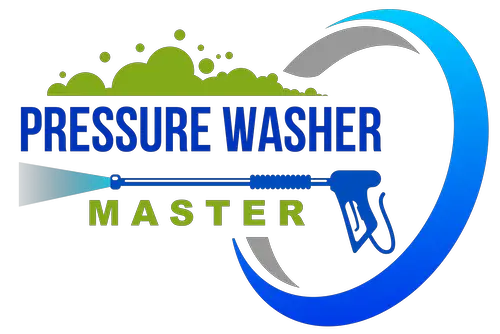How can you avoid water stains on your automobile after you’ve washed it? Is it even possible to do so? Yes, it is, and there are methods for doing so.
Some individuals are unconcerned with the water drops on their automobile after being washed; they consider it ordinary and do not try to dry them off.
When the drips dry up, they usually leave noticeable patches on the car’s body, which can be a source of anxiety for some individuals.
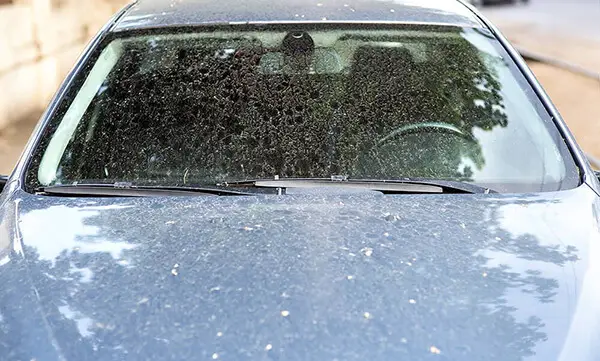
Surprisingly, there are methods for preventing water stains from developing on your car’s paint after being cleaned. Assuming that the vehicle wash men are aware of avoiding water spots after washing the car, let us teach you how to do so as well!
What Causes Water Spots After Washing Car?
A water spot is created when pollutants in a droplet of water dry on your car’s surface. There are several sorts of water spots based on what was in the water and how it dried. The three sorts of water spots are as follows:
Hard Water Spots
These are the most frequent forms of water spots after washing car, and they’re also called “hard water spots.” Mineral or dirt deposits on the surface of your car’s paint are known as hard water spots. They can happen when tap water, which is high in natural minerals, rests on the surface of your automobile for an extended length of time.
Water spots will appear when you wash your automobile with a hose and don’t properly dry it afterward or when a nearby sprinkler system sprays your parked car frequently. When the drops dry, they transform into a hard-to-remove dry-chalky material.
Bonded Mineral
Water spots that are bonded minerals are a little more severe than hard water spots. This is because water droplets with a higher concentration of minerals create bonded mineral water marks, which are more difficult to remove.
The minerals adhere to the car’s surface and can even damage the clear coat of your car’s paint. Even after removal, some might leave tiny spots or make your car’s paint seem lifeless. Acid rain with high levels of nitric and sulfuric acids is the most common cause of bonded mineral water spots, so you must know how to prevent water spots on car after rain.
Heating
When water droplets dry onto your car due to being heated by the sun, etching water marks appear. They are effectively “baked” onto the surface of your automobile. Etching water stains are the hardest to remove, and if done incorrectly, they may result in significant lasting damage to your vehicle.
How To Get Rid Of Water Spots After Washing Car
So, now that you’ve got these blemishes on your automobile, it’s time to get rid of them.
Starting with a water spot remover or a detailing product is always a good idea. However, I have several alternatives if you don’t have a remover or detailing spray on hand.
Wash Your Car
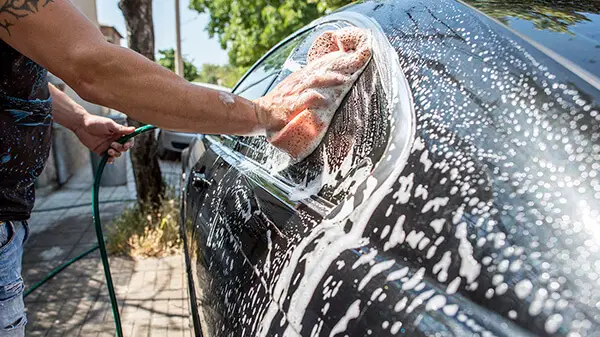
If there are car wash water spots on your car, you should first give it a thorough wash and dry. In most situations, any dried-on particles will loosen and rinse off with a two-bucket wash.
Dealers recommend deionized water or in-line water softeners. However, this isn’t practicable for most people, and it’s certainly not essential to get rid of wet stains. Instead, get some distilled water from the store and use it as the last rinse if you’re worried about it.
Remember that evaporation is not suitable for your car. That’s what caused the water stains in the first place. You should wash your car in a shady location and dry it properly.
Vinegar
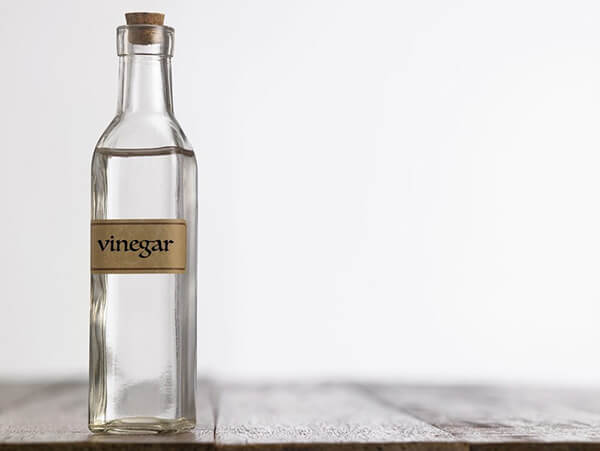
Vinegar is frequently praised as a wonder chemical that can clean tiles, wash pets, eradicate weeds, and extend the life of cut flowers. It should thus come as no surprise that vinegar may be used to remove water stains from vehicle bodywork and windows. Because white vinegar is moderately acidic, it works well against alkaline deposits.
White vinegar, distilled water, a clean bucket, a spray bottle, an old cotton towel, and paper towels are all you need to clean water spots after car wash.
Detailing Clay
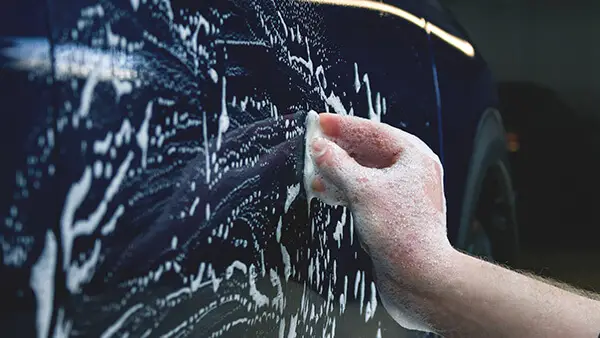
You may need to use detailing clay after you’ve washed your vehicle and attempted the vinegar approach. Metal particles, industrial pollutants, brake dust, rail dust, and overspray will be removed from the surface by the clay-resin substance. Always use clay in conjunction with a spray lubricant or detailing spray. This reduces the amount of scratching caused by loose particles.
When using clay to take up particles, knead it often. This guarantees that you’re always working with fresh clay. Once done, wipe the surface microfiber towels.
How To Prevent Water Spots After Washing Car
Although there are several techniques for keeping a car, these three well-recognized approaches are the most effective in reducing frequent hard water spots.
The Two-bucket Method
Most kinds of Stage I hard water stain may be removed by using the two-bucket approach every two weeks and NEVER leaving your car to air dry or burn in the sun during a wash.
Check out the method here:
Microfiber Cloth

A clean microfiber towel will dry car surfaces fast and remove unseen impurities without scratching the clear finish. Of course, if you want to go the additional mile, you may always use compressed air or a leaf blower to decrease water mark drips and the possibility of surface scratches on your freshly cleaned vehicle.
Apply A Coating Of Protective Paint
A 9H-rated nano-ceramic coating on a car may not prevent water spots from developing. Still, it does give some critical water-repellent qualities, preventing the crud inside the H2O from drying on the surface.
This is because nano-ceramic coatings have moisture-wicking “hydrophobic” characteristics, making it difficult for impurities to attach to them once fully cured.
Conclusion
When it comes to getting rid of unsightly water spots after washing car, prevention and a quick response to water exposure are critical. The ideal method is to get your automobile washed, polished, and waxed regularly to prevent water stains from forming. You may do it yourself or get a professional to do it for you if you want a perfect-looking car.
